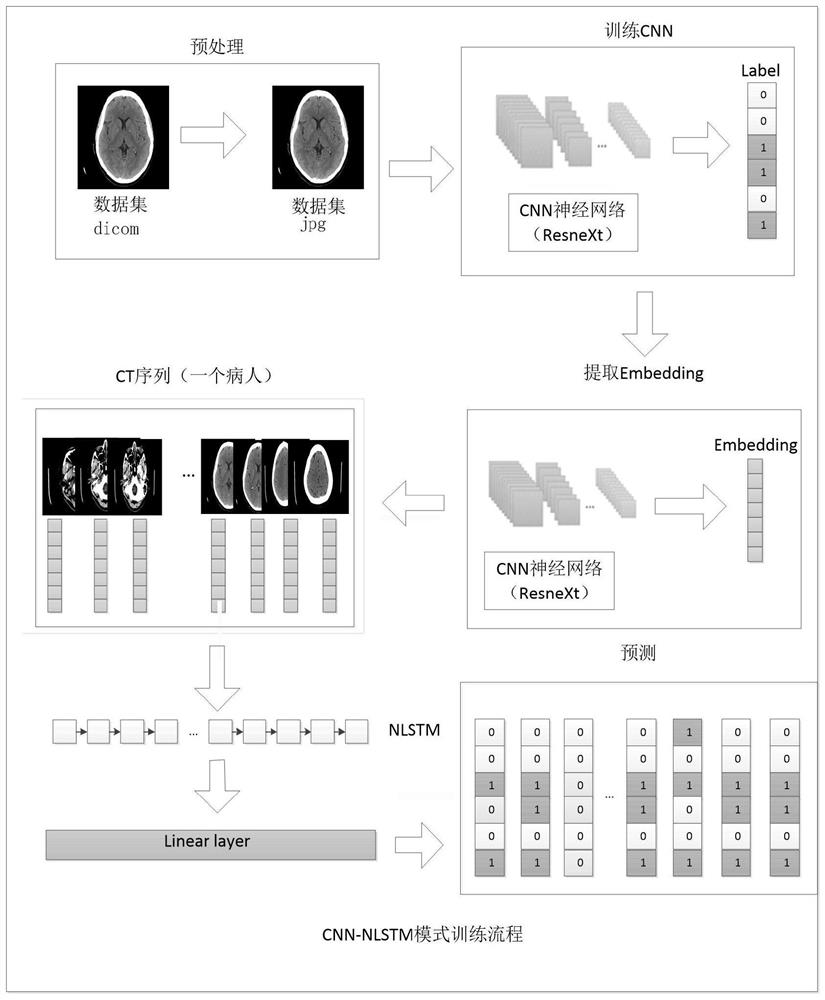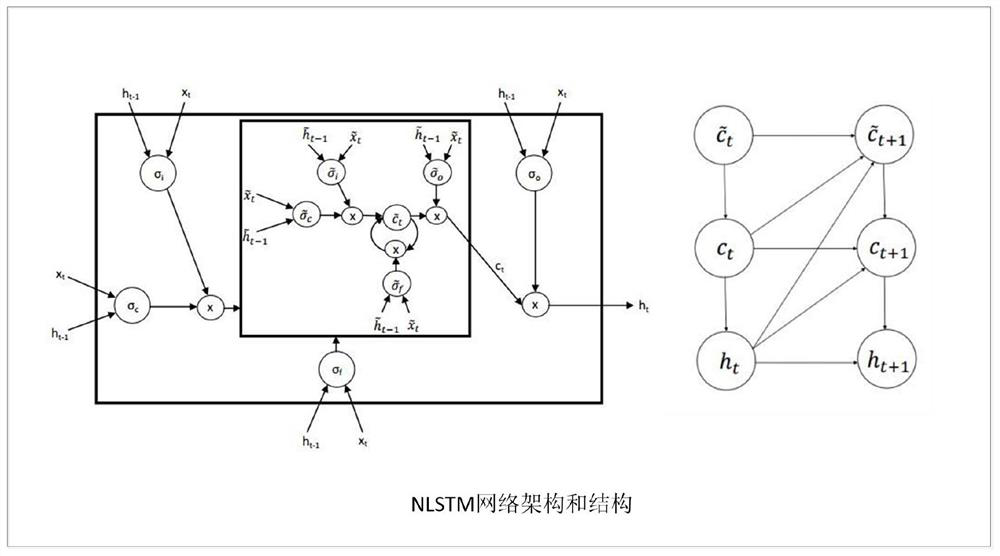Intracranial hemorrhage detection algorithm applied to CT image based on CNN and NLSTM neural network
A CT image and neural network technology, applied in the field of intelligent medical image processing, can solve the problems of doctors relying heavily on professionalism and time-consuming CT image evaluation, and achieve the effect of a wide range of application scenarios.
- Summary
- Abstract
- Description
- Claims
- Application Information
AI Technical Summary
Problems solved by technology
Method used
Image
Examples
specific Embodiment approach 1
[0045]Specific embodiment one: what this embodiment records is the intracranial hemorrhage detection algorithm that is applied to CT image based on CNN and NLSTM neural network, and described method is:
[0046] Step 1: Get the CT image value from the medical CT image in dicom format:
[0047] The image in dicom format should be converted into CT image value, the conversion formula is as follows:
[0048] image hu =pixel×Rescalelope+Rescaleintercept
[0049] Among them, image hu is the CT image value, also known as the hu value; pixel is the pixel value of the dicom image, Rescaleslope is the scaling intercept, and Rescaleintercept is the scaling slope, these two parameters are determined by the hardware manufacturer of the CT instrument, and can be obtained from medical CT images in dicom format get;
[0050] Step 2: Windowing operation
[0051] Since the range of hu values is generally large, this leads to poor contrast, so windowing is required. Windowing mainly adj...
specific Embodiment approach 2
[0087] Embodiment 2: In Embodiment 1, the intracranial hemorrhage detection algorithm based on CNN and NLSTM neural network applied to CT images, in step 4, the data enhancement processing is one of Flip, Normalize or RandomCrop.
PUM
 Login to View More
Login to View More Abstract
Description
Claims
Application Information
 Login to View More
Login to View More - R&D
- Intellectual Property
- Life Sciences
- Materials
- Tech Scout
- Unparalleled Data Quality
- Higher Quality Content
- 60% Fewer Hallucinations
Browse by: Latest US Patents, China's latest patents, Technical Efficacy Thesaurus, Application Domain, Technology Topic, Popular Technical Reports.
© 2025 PatSnap. All rights reserved.Legal|Privacy policy|Modern Slavery Act Transparency Statement|Sitemap|About US| Contact US: help@patsnap.com



